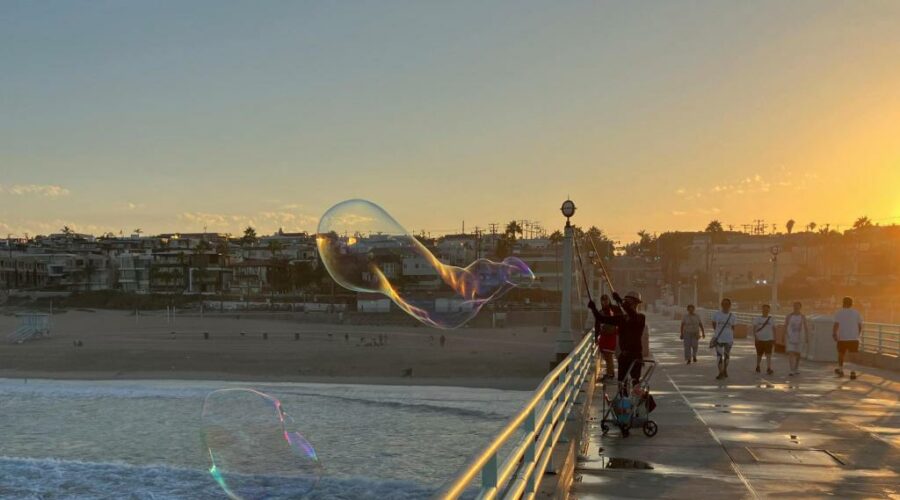California faces another day of grid-straining extreme heat – The Denver Post
By JOHN ANTCZAK and BRIAN MELLEY
LOS ANGELES (AP) — Miscommunication led utilities to mistakenly cut power to customers in several California cities during unprecedented demand on energy supplies, operators of the state’s electricity grid acknowledged Wednesday while warning the continuing extreme heat could prompt much larger rolling outages.
The confusion occurred Tuesday afternoon between a dispatcher at the Northern California Power Agency, which owns and operates power generating facilities for 16 members including a dozen cities, and the California Independent System Operator as the grid it manages was perilously close to running out of energy amid record-breaking temperatures.
“That is certainly concerning to me,” said Elliot Mainzer, president and CEO of Cal-ISO. “There was a lot happening on the grid for everybody last night. And so we’ll double down on the communication to make sure that doesn’t happen again.”
With record demand on power supplies across the West, California snapped its record energy use around 5 p.m. with 52,061 megawatts, far above the previous high of 50,270 megawatts set July 24, 2006.
As residents and businesses cranked air-conditioning to escape withering heat across the West and solar power supplies began to wane, Cal-ISO issued a stage 3 energy emergency alert to prepare utilities to initiate outages if demand didn’t decrease. The state’s legal marijuana regulatory agency also urged businesses to turn off lights and reduce power or use backup generators.
The Northern California Power Agency said its dispatcher misinterpreted Cal-ISO’s order to prepare to cut power and immediately undertook the process to cut 46 megawatts — enough to serve about 35,000 customers — in the cities of Alameda, Lodi, Santa Clara, Palo Alto, Healdsburg, and Ukiah.
It wasn’t clear how many customers lost power, though the agency said no outage lasted more than an hour.
“Once the outages had been initiated, our dispatcher contacted (Cal-ISO) to inform them that the curtailment action had been undertaken, and was then notified there had been a misunderstanding of the initial order,” NCPA said.
With the state on the brink of outages, Gov. Gavin Newsom for the first time triggered a wireless emergency alert system at 5:45 p.m. that sent messages to 27 million cellphones urging them to turn off or reduce non-essential power.
Within moments, there was a reduction of more than 2,000 megawatts, bringing the state “back from the edge,” Mainzer said.
“It took a very loud signal,” Mainzer said. “I think they now recognize that we’re not messing around. This is a real issue. And we need real response.”
Newsom, speaking in Beverly Hills, said he had debated pushing that button for the past four to five days. He ultimately decided to test it and concluded it was a game- changer, though he’s reluctant to use it too often because he fears weakening its effectiveness.
With residents and businesses under the eighth consecutive day of a “flex alert” requesting power conservation between 4 p.m. and 9 p.m., a similar response was needed Wednesday.
Western states are struggling through one of the hottest and longest September heat waves on record. Temperatures began soaring last week, and the National Weather Service warned that dangerous heat could continue through Friday, despite some slight moderation.
Nearly 54 million people were under heat warnings and advisories across the West as temperature records were shattered in many areas.
California’s state capital of Sacramento hit an all-time high Tuesday of 116 degrees (46.7 C), breaking a 97-year-old record. Salt Lake City tied its all-time high temperature Wednesday at 107 degrees (41.6 degrees Celsius). Reno, Nevada, broke records for the hottest temperatures ever recorded in September, according to the National Weather Service.
Scientists say climate change has made the West warmer and drier over the last three decades and will continue to make weather more extreme and wildfires more frequent and destructive. In the last five years, California has experienced the largest and most destructive fires in state history.
On the Northern Plains, the unusually late heat wave peaked Wednesday following a prolonged string of scorching days.
Along a main thoroughfare in downtown Billings, where the temperature set a daily record at 102 degrees (39 C), Gale Spotted Bear, native of the Blackfeet Reservation, sought shelter from the punishing heat in the shade of a vacant building.
“This year has been hotter than hell,” said Spotted Bear, adding that homeless people can be hit the hardest if they have nowhere to go. “It’s hard out here.”
The latest wave of high temperatures has surpassed anything California has seen, including a heat snap in August 2020 that led to two days of rotating power outages, Newsom said.
“We threw out all the old playbooks in terms of our scheduling (for) worst-case scenarios,” Newsom said. “Even the worst of the worst-case scenario never extended for a week like this.”
___
Associated Press reporter Michael R. Blood contributed from Beverly Hills and Matthew Brown contributed from Billings, Montana.
Source: Read Full Article

